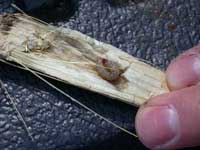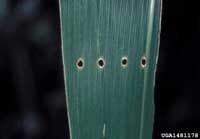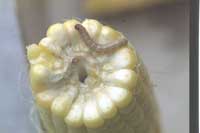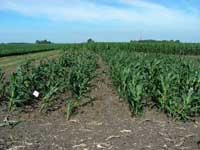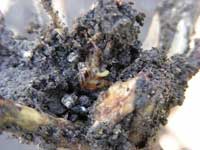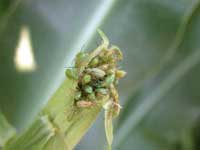Extension > Garden > Diagnose a problem > What's wrong with my plant? > Vegetable > Sweet corn > Plant fallen over
Sweet corn > Whole plant > Plant fallen over
1 of 2
European Corn Borer
Ostrinia nubilalis
- Kernels partly or completely chewed; brown droppings (excrement) is usually present
- Stalks can fall over ("lodge")
- Small holes should be evident on stalks, sometimes with brown frass coming out of the holes
- Leaves have small holes, or "shot-holes"
- Larvae are light brown or pinkish gray in color with round dark spots on each body segment. Mature larvae are about 1 inch long
- More information on European Corn Borer
2 of 2
Northern and Western Corn Rootworm
Diabrotica barberi and Diabrotica virgifera virgifera
- Adult corn rootworm beetles feed on corn silk which can reduce the number of kernels on the cob
- In severe cases, very few kernels will be produced on the cob
- Larvae feed on roots of corn, which can cause plant to fall over, or "lodge"
- Northern corn rootworm adults are about 3/16th inch long and pale green; western corn rootworm adults are about 5/16 inch long, yellow to green in color with three black stripes running along the back of the beetle
- More information on Northern and Western Corn Rootworm



